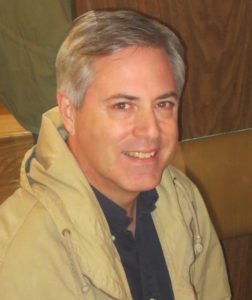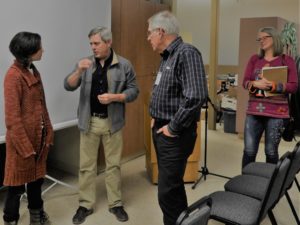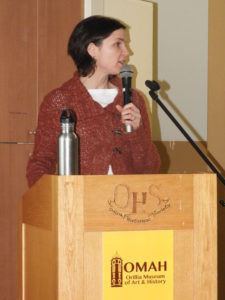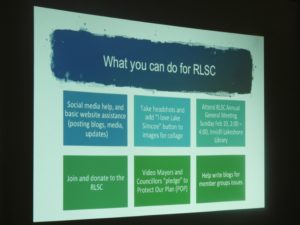Chances are if you watch television or spend any time on social media you will have heard something about DNA testing. Many people are exploring their ancestry by using this technology. The Orillia Naturalists’ Club learned how advances in DNA sequencing expertise is currently used to explore and monitor microbial water quality.
Dr. Tom Edge, Adjunct Professor from McMaster University shared his immense knowledge and practical field applications in this topic. Dr. Edge received his B.Sc. from the University of Guelph, his M.Sc. from the University of Ottawa and his Ph.D. in Environmental Microbiology from Carleton University. He worked for Environment Canada for many years, most recently at its National Water Research Institute in Burlington.
He has investigated waterborne pathogens and the microbiology of source water used for drinking, recreation and food production. He now focuses on applying DNA analysis technologies for better characterizing water quality and determining the sources of pollution causing impairments like beach closures.
Living in an area surrounded by freshwater lakes, as we do in Orillia, who hasn’t been frustrated or concerned with beach closures? It seems to be a common occurrence every summer. Usually on the hottest day, when a swim sounds the best.
Often these closures are based on testing methods that have been around for many years. Testing traditionally uses a fecal indicator bacteria and checks for E. coli. Although this system has been in place for years it has some limitations. For example, a twenty-four hour delay, and it is not a good indicator of all pathogens, like viruses, which also have a health risk. According to Dr. Edge we live in a world of microorganisms. There can be many millions of bacteria and viruses in a small glass of fresh water, but thankfully most are harmless to us.
The use of DNA sequencing, although not widely available yet, can help determine the specific source of contamination and assist in stopping the pollution problem at the source. Using metagenomics, or the study of microbial communities, can determine what taxa (eg. bacterial species) are present. How does this help? It is a more complex analysis and can connect the results from a water sample to a more specific fecal pollution source. For example, determining if the count of E.coli is high due to birds, a sewage treatment plant overflow or something else.
As this experimental technology advances, the hope is it becomes more readily available and that instead of a response approach to contamination in the future we can look to pollution prevention resulting in an overall reduction in risk to human and environmental health.
 |
 |
| Dr Tom Edge
|
Discussion after the meeting
|
 |
 |
| By invitation, Claire Malcolmson made a 10 minute presentation to the Club, about The Rescue Lake Simcoe Coalition |
We are encouraged to join this group, and the executive will discuss this. Ideally we could send a member of our club to their meetings to keep us informed. Would anyone like to be our representative? |
| Photos by Marilyn Clark | |
| Summary of meeting by Cathy Bernatavicius |
